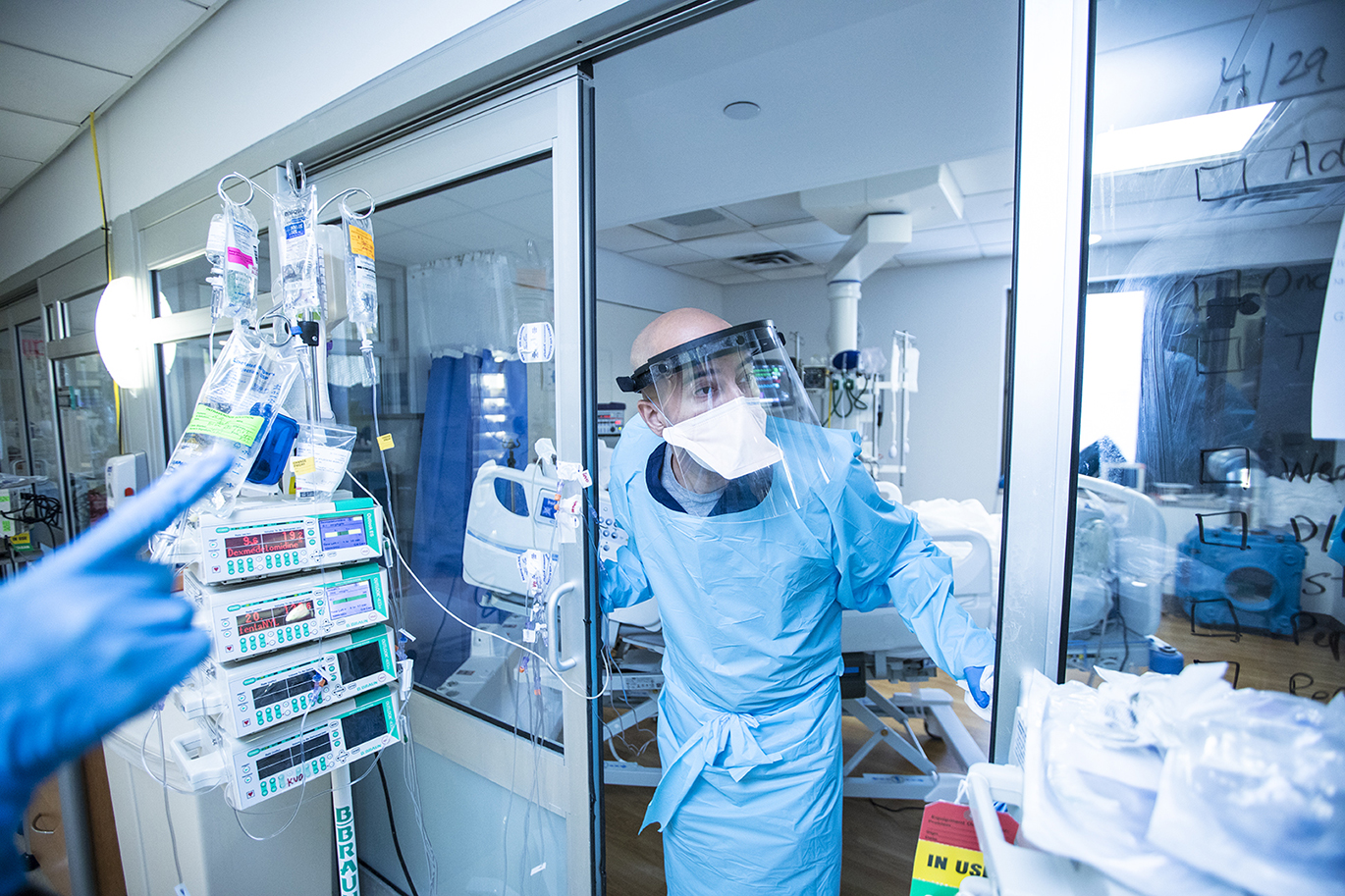
Caring for the Most Critically Ill Patients
Dr. Amit Uppal
Director, Critical Care,
NYC Health + Hospitals/Bellevue
My Role: At the peak of surge, there were about 110 patients in our ICUs. As the Director of Critical Care, I was responsible for ensuring we had the space, staff, and supplies to provide critical care services to these patients. During clinical shifts, I provided direct care to patients, as needed.
I was involved in Hurricane Sandy and Ebola crisis. With COVID-19, there is significant uncertainty about the scale of the conditions to expect.
Toughest Moment: On an overnight shift well into the surge, I met with the Critical Care fellows on call to split up which patients we would check on. I was standing outside a patient room, looking at their ventilator through the glass doors. One of my fellows texted me that a ventilator on one of their patients had started alarming and was displaying "Low Oxygen Pressure." Within seconds, I began to hear the same alarm coming from every direction in the ICU. Every single one of our ICU patients was dependent on our oxygen supply for survival. The possibility of running out of oxygen was unthinkable. Immediately, our team of physicians, respiratory therapists, and nurses went bed-to-bed, to every ICU patient and identified any that were receiving more oxygen than needed. Then, the respiratory therapists delivered oxygen tanks to the bedsides of the patients most dependent on oxygen.
Within two hours of the initial alarm, we received confirmation that the hospital had plenty of oxygen and that the problem was an alarm glitch, which was not designed for our current level of oxygen usage. The alarms ceased and no patients suffered any harm. While this news came as a huge relief, those two hours of anxiety for staff that were already stressed and sleep deprived took a big toll. Given the way the alarm arose, seemingly out of nowhere, everyone felt on edge with a sense of "What might happen next?"
Lessons Learned: We learned a great deal during the first surge. The characteristics of spaces that we can use for critical care, the most efficient staffing models, and our clinical approach to patients have all been informed by our experience. Our facilities and engineering teams created nearly 40 additional beds that match our formal ICU beds in terms of technology and the ability to keep our patients and staff safe. We now understand the course of the disease better and know what factors signify a patient more likely to deteriorate. The knowledge around therapeutics has continued to evolve and we will know more about which treatments are likely to help which patients.
How the Pandemic Changed Me: I was inspired by the Bellevue and NYC Health + Hospitals response. We saw that the vulnerable patients we advocate for were dramatically and disproportionately affected by the NYC COVID-19 surge. Our system rose to the occasion and provided high quality care to those patients under historic and unprecedented circumstances. Our staff accepted the potential risk to themselves in order to carry out our mission, and those who came from other parts of the country witnessed that dedication. We heard from many that their experience in our hospitals had a permanent impact on them. I have always been proud to work with the staff and NYC Health + Hospitals leadership, but our response was a dramatic reminder of what makes our public health system so special.